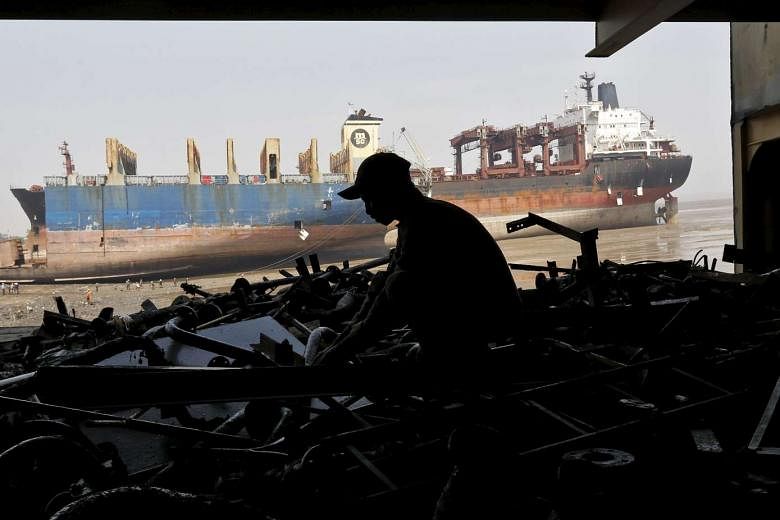BEIJING • For decades, the dangerous and polluting ship-breaking yards that stretch for nearly 10km along the beaches of Alang in the Indian state of Gujarat successfully resisted the efforts of activists and foreign governments to shut them down.
But now they finally may have met their match. Desperate steel mills in China, whose domestic markets have diminished in a slowing economy, are dumping their surplus on India.
Suddenly, the thousands of tonnes of steel generated by Alang's ship recyclers cost more than much of what China is sending to Indian shores.
The impact has been profound. The number of Alang ship breakers has halved to 50 over the past year, says the Ship Recycling Industries Association of India.
Cheap Chinese steel, however, is just the immediate problem for Alang's ship breakers. A bigger threat from China is that its own ship breakers have been cleaning up their act with government help and are poised to offer the world's ship owners sustainable, low-cost ship-breaking services.
Although China will not extinguish Alang completely, the Indian industry is in poor shape to upgrade and compete with China's more environmentally advanced ship breakers.
Alang's ship-breaking industry dates back to the early 1980s and an early boom in India's construction sector. The area's recyclers saw an opportunity to provide cheap steel to mills and contractors, and they started importing used ships to demolish.
Alang's access to tens of thousands of low-cost labourers gave it a big advantage over ship breaking in the developed world, where labour costs in particular made the dangerous and dirty work less profitable. Similarly, environmental regulations in the developed world did not apply in India, bringing down costs.
Consequently, even during bad times, the cost of recycling in China was still higher than in Alang. As a result, India's ship breakers have long been able to pay more for a vessel than their Chinese rivals, so the old ships continued to steam to Alang and other South Asian ports.
Then the Chinese government stepped in. In 2013, in search of a means to bolster ship recycling and spur a sputtering economy, the government offered a massive ship recycling subsidy that was recently extended to 2017.
Chinese ship owners received US$120 (S$165) a tonne for a recycled ship and an extra US$120 a tonne applied to the purchase of a new one. There was no longer any economic incentive to send old Chinese ships to anywhere but China, and Alang - and other South Asian destinations - began to lose out.
The consequences for the industry have been substantial. From January to April this year, China recycled 65 ships, 24.8 per cent of the 262 scrapped worldwide during the period, according to the Shipbreaking Platform organisation, just behind India's 69 and Bangladesh's 66. China will likely hit the No. 1 spot soon. That momentum is unlikely to fade.
Alang, hobbled by a collapse in steel prices, is in little position to make capital investments, much less compete against a Chinese state-subsidised industry.
China's ascendancy as a ship breaker won't spell the complete demise of Alang. Countries and ship owners will still send ships to its beaches. But thanks to government investment and low steel prices, China has a big head start in becoming the destination of the future.
BLOOMBERG

